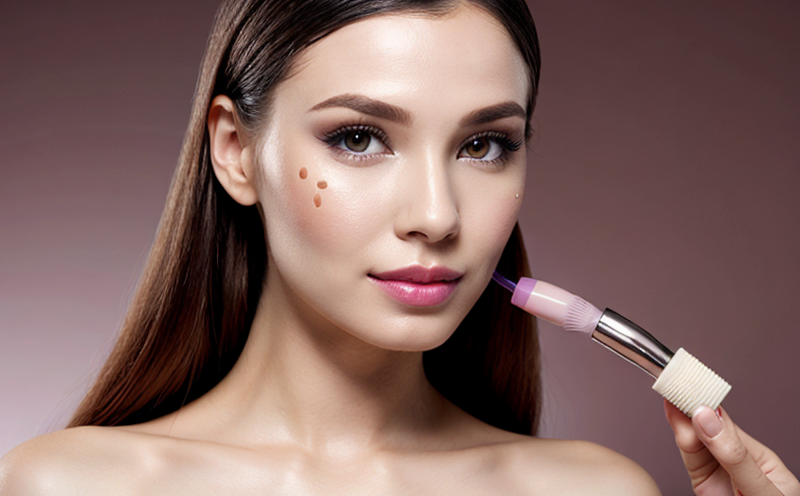In Vitro Antioxidant Capacity Testing in Cosmetic Creams
The in vitro antioxidant capacity testing for cosmetic creams is a critical process that evaluates the ability of antioxidants present in these products to neutralize free radicals. This method offers an efficient, non-toxic alternative to traditional animal-based tests and aligns with modern sustainability goals within the cosmetics industry.
Antioxidants play a vital role in preserving the stability and effectiveness of cosmetic creams by preventing oxidative damage caused by reactive oxygen species (ROS). By conducting antioxidant capacity testing on cosmetic creams, manufacturers can ensure that their products are safe for consumers while also maintaining product quality over time. This testing is especially important given the increasing consumer awareness about the health benefits associated with antioxidants.
The in vitro approach allows for controlled laboratory conditions where the interaction between antioxidants and ROS can be precisely measured. This method eliminates the need for live animal subjects, adhering to ethical standards and regulatory requirements. Regulatory bodies such as the European Union (REACH) have encouraged the development of alternative methods to replace traditional toxicity tests.
During the in vitro antioxidant capacity testing process, various antioxidants commonly found in cosmetic creams are subjected to standardized protocols designed to mimic real-world conditions. The test involves exposing these antioxidants to a solution containing hydrogen peroxide, which acts as a model for ROS. The reduction in hydrogen peroxide concentration is measured as an indicator of antioxidant activity.
For quality managers and compliance officers, this testing method ensures that cosmetic creams meet stringent safety standards set by regulatory authorities. R&D engineers can use the results to optimize formulations, enhancing both product performance and consumer satisfaction. Additionally, procurement teams benefit from having reliable data on ingredient efficacy, contributing to more informed purchasing decisions.
The applied standards for in vitro antioxidant capacity testing include ISO 17025:2017 for quality management systems of calibration and testing laboratories, as well as specific guidelines provided by the European Union's REACH regulations. These standards ensure that tests are conducted consistently across different laboratories, providing accurate and comparable results.
| Applied Standards | Description |
|---|---|
| ISO 17025:2017 | International Organization for Standardization standard ensuring competence of testing laboratories. |
| REACH Regulations | European Union regulation requiring safety assessments to ensure human and environmental health. |
In summary, the in vitro antioxidant capacity testing process is essential for ensuring that cosmetic creams are safe, effective, and meet regulatory requirements. By using this method, companies can contribute positively to both product quality and ethical business practices.
Applied Standards
The in vitro antioxidant capacity testing for cosmetic creams is governed by several key standards that ensure the accuracy, consistency, and reliability of the results. These include:
| Applied Standards | Description |
|---|---|
| ISO 17025:2017 | This international standard ensures that laboratories are competent and capable of conducting testing and calibration services. It provides a framework for quality management systems, including requirements for personnel, facilities, equipment, methods, and documentation. |
| REACH Regulations | The Registration, Evaluation, Authorization and Restriction of Chemicals (REACH) regulation in the European Union mandates safety assessments to ensure that chemicals used in cosmetic creams do not pose a risk to human health or the environment. This includes thorough evaluations of antioxidant properties. |
These standards are critical for maintaining high-quality testing practices and ensuring compliance with international regulations.
Benefits
- Ethical: Eliminates the use of live animals, aligning with ethical business practices.
- Efficient: Provides quick results compared to in vivo testing methods.
- Consistent: Ensures reproducibility and accuracy across different testing environments.
- Safe: Reduces risks associated with handling potentially hazardous materials during tests.
- Regulatory compliance: Meets international standards for cosmetic product safety.
- Eco-friendly: Supports sustainable practices by minimizing environmental impact.
- Data-driven decision making: Provides actionable insights to improve product formulations.
The in vitro antioxidant capacity testing process is thus a valuable tool for enhancing the quality and safety of cosmetic creams, while also supporting ethical business operations and regulatory compliance.
Quality and Reliability Assurance
The reliability of in vitro antioxidant capacity testing is paramount for ensuring the safety and effectiveness of cosmetic creams. Quality assurance measures include:
- Compliance with ISO 17025:2017 standards, which govern the competence of laboratories.
- Use of precise instruments calibrated according to international standards.
- Precision in sample preparation, ensuring consistency across tests.
- Regular calibration checks and maintenance of equipment to prevent errors.
- Strict adherence to protocols, ensuring that each test is conducted under controlled conditions.
- Training of personnel on the latest testing methodologies and best practices.
By implementing these measures, laboratories can guarantee the accuracy and reliability of their in vitro antioxidant capacity tests. This not only enhances product quality but also builds trust with consumers and regulatory bodies.





